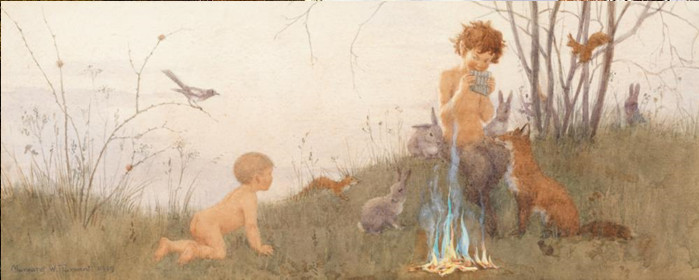This desire to transcend the normal world is a powerful one, powerful enough that therapists have used fantasy stories to help their patients, and media psychologists have frequently found that fantasy tales can help fulfill deep psychological gratifications. The therapist Mulholland recounts how comics can play an important role in aiding those who seek some form of therapy. “From the guise of superhero and alter ego characters engaged in classical hero-versus-villain scenarios… He views the world of comics as a place where true and idealized selves can join forces and, in a setting that carries ‘no repercussions in the real world, situations can be resolved as the artists see fit.” (Kate Lucas-Falk). Other researchers have found that Dungeons and Dragons in a therapeutic setting can increase people’s confidence in social settings, reduce loneliness and the disconnectedness that are increasingly causing problems within our society (Abbot, Icon, Stauss, and Burnett). The value of such fantasies should come as no surprise, for the popularity of fantasies has typically peaked during the hardest and worst times in human history. As we’ll discuss further in this book people have turned to fantasy, mythology and fairytales during economic depressions and even WWII, for media psychologists and therapists have found that people can gain numerous emotional and psychological benefits from fantasy tales.
 |
| Margaret Tarrant, 1919 |
The Fairy tale and Fantasy Story
The fairy tale protagonist steps out their door in search of fortune, leaving behind their childhood, while at the same time seeming to embrace the energetic zaniness of a kid at play. Many of these stories, are after all adventure stories, an opportunity to escape from the often repressive rules of civilization. In essence fairytales are a sort of adventurous play which even adults can engage with. Indeed, the Grimm brothers were told many of the fairytales they wrote down by older women who shared these stories in spinning and sewing circles. These stories were a form of expression that allowed women who were otherwise bound to the home, the opportunity to set out into the wild unknown, to seek an adrenaline rush, and learn how to deal with the emotions of trepidation, fear, excitement, success, and failure while still safe by the fire. Fairytales allowed people to express themselves and rebel thru stories, while passing on cultural understanding and values.
Fairytales and fantasy stories have often been used as a means for individuals to discover their own desires, hopes, and fears. They are frequently stories about unusual people, who often feel like outsiders within their own culture, discovering success through cunning and unusual behavior. This is important because “in every culture there is a tension between the needs of the community and the needs of the individual. The fairy tale, in my view, exists as a kind of ultra-sensitive balance between these two needs. It mediates between the life we have and the life we want; between the world we inherit and the world we imagine.” (Hilda Davidson)
Like fairytales fantasy stories are at once a reflection of the culture in which they exist and a critique of it. Fantasy is a genre tailor made to safely explore odd philosophical and moral concerns, which is perhaps why these are so characteristic of the genre and why fantasy stories so frequently include utopian and dystopian elements. (Edward and Mendlesohn) Fantasy “draws much of its strength from certain ‘primordial desires’ for the enrichment of life: the desire to survey the vast depths of space and time, the desire to behold marvelous creatures, the desire to share the speech of the animals, the desire to escape from the ancient limitations of man’s primary world condition.” (Swinfen)
Fantasy stories help us satisfy deep needs to explore morality, while also helping to sate our desire for adventure and heroism. These desires can grow so strong in people that just before World War I the desire for adventure was becoming a palatable thing, which is why people were excited when the war started. People need to feel a certain amount of energy and excitement, and fantasy offers people a way to do so safely, which is likely why video games have been shown to help people achieve emotional equilibrium, and that those who play them at home can potentially increase their productivity at work.
In this book we will explore the psychology and history of fantasy in storytelling, to better understand the reason that people are drawn to this genre. In addition, I will provide information on traditional beliefs that people once held, regarding the fairies of fairytales, as a sort of guide to understanding fairy mythology.
 |
Luis Ricardo Falero: A Fairy Under Starry Skies: 19th Century (for a long time nudes were forbidden in art, except when it came to mythological figures
|
|














0 comments:
Post a Comment